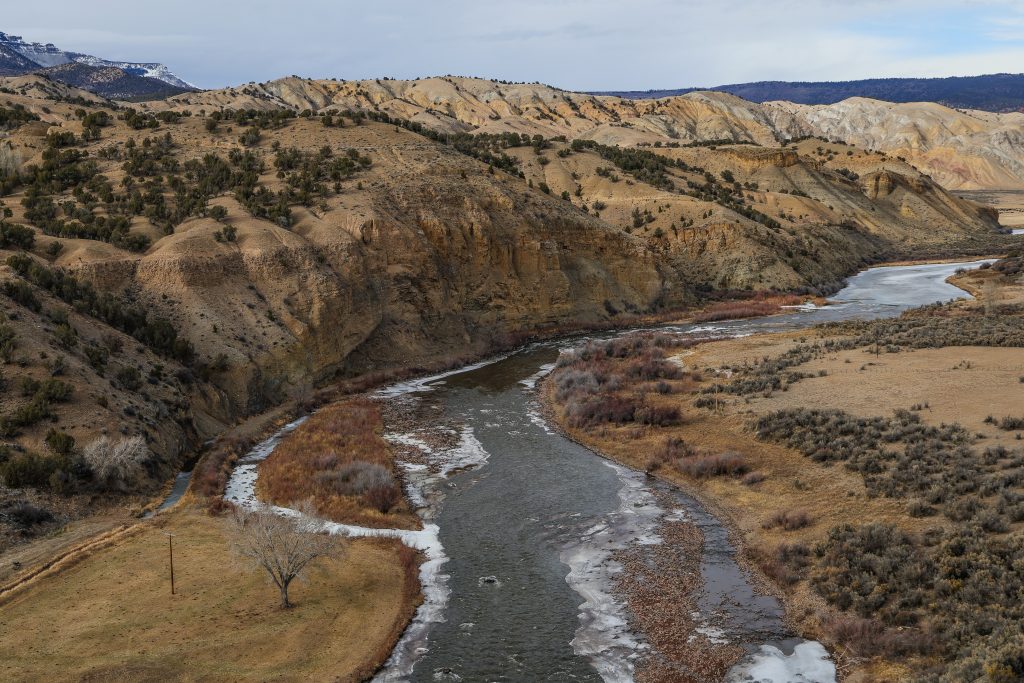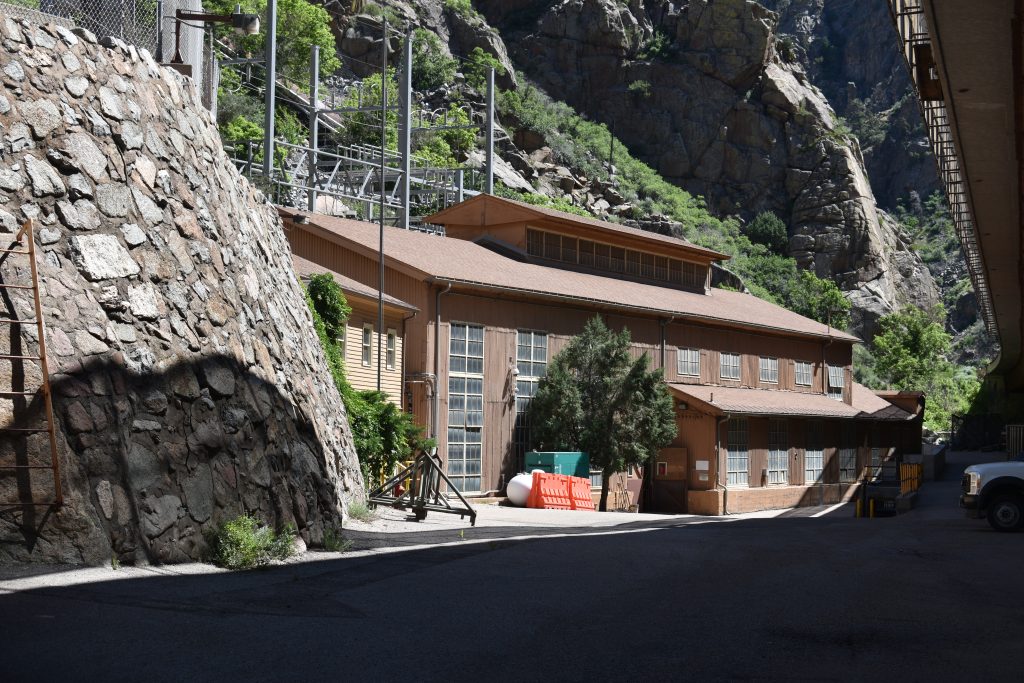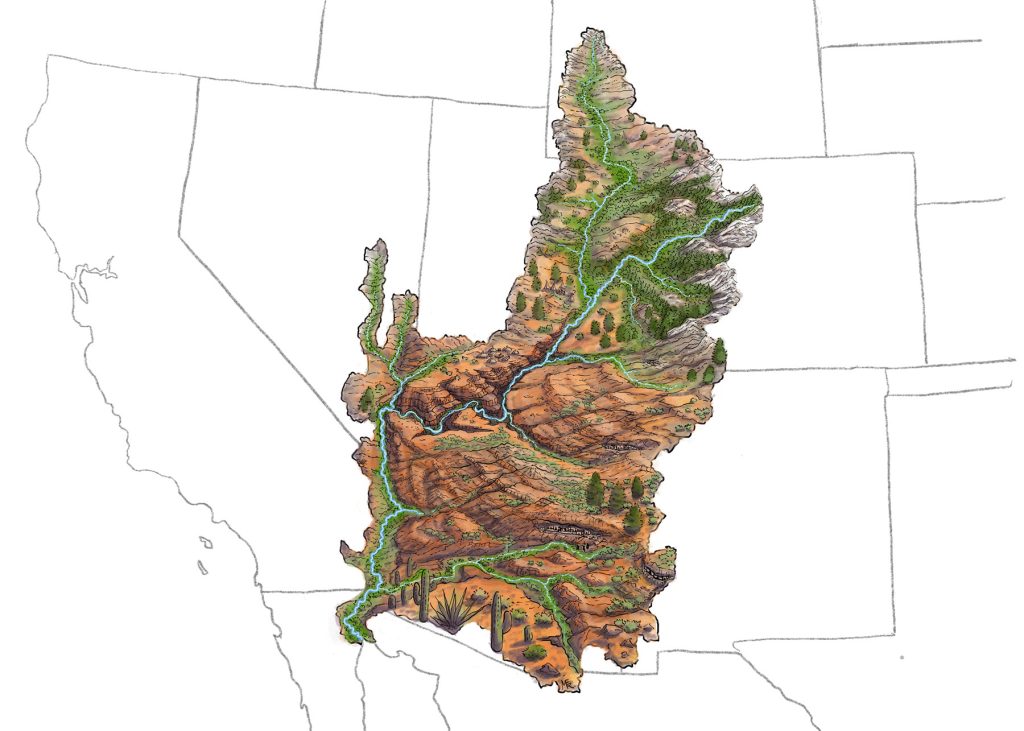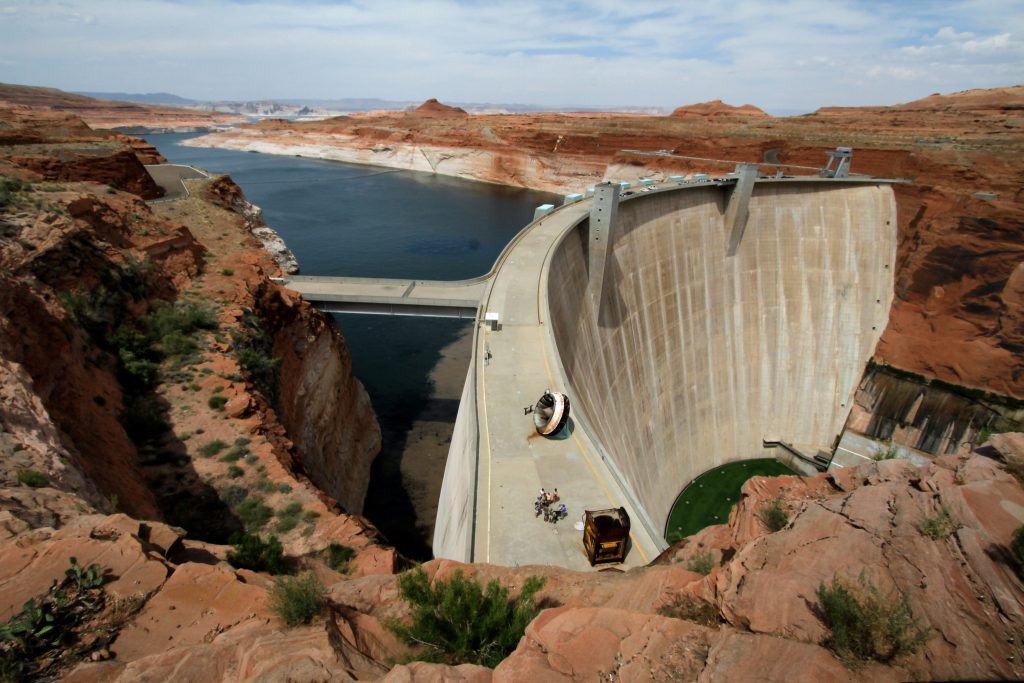Colorado River users are at a crossroads as two looming decisions hang over the West’s future
The Shoshone water rights acquisition and negotiations on post-2026 Lake Powell and Mead operations dominate conversations at the Colorado River District’s annual water seminar,

Chris Dillmann/Vail Daily archive
Western Slope elected officials, water managers, engineers, and conservationists met in Grand Junction on Friday, Oct. 3, all focused on one thing: the uncertain future of the Colorado River.
“Water users, as a lot, tend to crave certainty, and that certainty seems more and more elusive these days,” said Peter Fleming, general counsel for the Colorado River District, at this year’s annual seminar hosted by the River District.
Andy Mueller, the River District’s general manager, said the Colorado River Basin was “at a crossroads.”
While the seminar broached many of the challenges and opportunities facing those who rely on the Colorado River, most discussions came back to two looming decisions that will dictate how the future looks for the 40 million people, seven states, two counties, and 30 tribal nations that rely on the waterway.
This includes the River District’s proposed $99 million acquisition of the Shoshone water rights and the interstate negotiations over the post-2026 operations of Lake Powell and Lake Mead. Both decisions will have ramifications for all Colorado River users — including agriculture, recreation, and municipal water — but are stalled by competing interests, be it political, geographic, or otherwise.
“In the world of Western water, perspectives don’t always align,” said Matt Aboussie, communications director for the Colorado River District, in describing this year’s theme for the annual seminar, Across Divides.
“Despite these divides, the challenges we face on the Colorado River and in the basin demand that we find common ground. We can’t afford to let the differences prevent progress,” Aboussie added.
Colorado Sen. Marc Caitlin, R-Montrose, who also serves as the River District’s board president, offered that the challenges ahead were as significant as the opportunities.
“If we stay united across basins, political lines, and water uses, we can secure a healthy and sustainable future of the Colorado River and for the people of Western Colorado,” Caitlin said.
Shoshone acquisition held up

The River District is currently working through a multi-year process to purchase the Shoshone water rights from Xcel Energy for $99 million. The rights — established in the early 1900s — are the oldest, non-consumptive water rights on the Colorado River.
“The West Slope, back in the 1930s, recognized that those Shoshone rights were the most important commanding water rights on the river,” Mueller said. “What it does, because of its seniority and its size, is it limits the amount of water that transmountain diversions can take to the east without replacing that water.”
“All around the state, we depend on this river, and if we allow our system to pump it dry, it will not be there to support future generations on either side of the body,” he said.
The Shoshone water right is currently tied to the hydroelectric power plant in Glenwood Canyon, which returns 100% of the water used to produce electricity to the river. However, he said that uncertainty surrounding the plant’s longevity, given its age and location — which he called an “area of great geohazard” — led the River District to seek acquisition of the rights. Under the proposed acquisition, Xcel would continue to operate the plant.
“We’ve been very worried because if that water right diminishes itself and someday gets abandoned, that water won’t be there — it will be picked up by upstream divers who will be in priority … and that will impact every one of our communities in western Colorado,” he said.
The district intends to purchase the right and reach an instream flow agreement with the Colorado Water Conservation Board — the only entity that can hold an instream flow water right in Colorado. Doing so would maintain the status quo of the river, the River District claims.
Defining what the status quo looks like, though, has led to disagreements between the West Slope entity and East Slope water providers.
Denver Water, Northern Water, Colorado Springs Utility, and Aurora Water — all of which have water rights junior to Shoshone and receive water from the Colorado River basin via transmountain diversions— have contested the River District’s proposed instream flow agreement. In a September hearing, the Front Range entities argued the proposal could enlarge the right and that the River District should not be granted authority to manage the right alongside the Colorado Water Board.
The first issue — determining how much water the right includes — will be decided in Colorado water court, the final step in the district’s acquisition. However, the question of management authority has created an impasse between the parties.
“The two entities in the state charged with protecting the Colorado River by statute are the (Colorado Water Conservation Board) and the Colorado River District. The four opposers are charged to protect their rate payers,” Mueller said.
Currently, the two parties are attempting to negotiate a deal and the agreement will be back before the water board in November.

The River District’s acquisition also hinges on $40 million in federal funding that was granted in the waning days of the Biden administration and frozen in the first days of the second Trump administration.
Reps. Joe Neguse, D-CO2, and Jeff Hurd, R-CO3, both agreed on Friday that securing the Shoshone funding was a top priority for them.
“We have a once-in-a-generation chance to really protect and preserve Colorado’s future, and that is what Shoshone represents,” Hurd said. “It’s durable. It’s long-term. It’s good for the environment. It helps us meet our compact obligations, as well.”
An additional $57 million in funding for the Shoshone acquisition has been pledged by 32 Western Slope entities, the Colorado Water Conservation Board, and the River District’s board.
“We’re going to get those rights; we’re going to make sure those rights stay in the river,” Mueller said.
Colorado River negotiations gridlocked

Water allocation on the Colorado River dates back to the 1922 compact agreement, which divided the river between the upper and lower basins. Right now, it’s not the compact, but the 2007 operational guidelines for Lake Powell and Lake Mead that are being renegotiated.
While the four Upper Basin states — Colorado, New Mexico, Utah, and Wyoming — rely predominantly on snowpack for water supply, the Lower Basin states — Arizona, Wyoming, and Nevada — rely on releases from Lake Powell and Lake Mead.
The 2007 guidelines for the two reservoirs, which govern how they store and release water, are set to expire in 2026. The seven states have until Nov. 11 to try and reach a consensus on the reservoirs’ post-2026 operations; otherwise, the federal government will step in and impose its own plan.
Becky Mitchell, who has been negotiating on Colorado’s behalf, said on Friday that she is “hopeful” for this seven-state consensus “because the alternative is not great.”
“I think we’ve kicked the can and we’re at the end of the road,” Mitchell said.
One big point of disagreement is the idea of “mandatory cuts,” which she joked should be a “four-letter word.”
Throughout the negotiations, the Lower Basin states have advocated for basin-wide water use reductions. The Upper Basin states, however, have pushed back on the idea, claiming they already face natural water shortages.
“In Western Colorado, it happens every year,” Mueller said.
Jay Weiner, a water attorney representing the Fort Yuma Quechan Indian Tribe whose reservation spans Arizona and California and the seminar’s only representative speaking on behalf of Lower Basin interests, said that “from our perspective, as we observe these things, the position that the Upper Basin will not accept drop one of mandatory, enforceable cuts kills conversation.”
In 2007, both Lake Powell and Lake Mead were full. However, in the years since, water levels have declined.
“The problem is we’ve been managing it in a constant state of crisis,” Mueller said.
Nancy Smith, the conservation director of The Nature Conservancy’s Colorado River program, said that the problem with being in constant crisis response is “there isn’t a chance to pro-actively look forward and think about options that include healthy habitat for fish, wildlife, healthy flowing rivers for recreation, et cetera.”
“We’ve got to fit demand within supply and not repeat the mistakes of the past, where there isn’t enough water to address environmental needs, not enough water to address tribal rights and interests, and certainly challenges for regulation,” Smith said. “We do think it’s going to take a collaborative compromise.”

Mitchell said that both sides need to “set aside building an operations plan that meets the needs as they are currently.”
“I think that’s been a bit of a struggle,” she added. “That involves us creating a mechanism that allows the Upper Basin and the Lower Basin to manage within available supplies. We both have to do that. And we can’t have anything that suggests a delivery obligation or really hit on those major compact issues … We have different views of the compact. We’re going to have to fall somewhere between them.”
The stakes of striking the right balance in the negotiations are high.
“Without an agreement to manage overuse and prolonged drought, every sector that depends on the river faces severe consequences,” said Greg Williams, general manager Ute Water Conservancy District, a Grand Junction utility company. “As a municipal provider, we generally hold these fairly junior rights that are most likely vulnerable to cuts from the kind of curtailment.”
Further cuts, Williams added, will “lead to aggressive water conservation measures, up to including mandatory restrictions for our customers, moratorium on tap sales, which then limits our constraints through economic growth.”
Solutions, many argued on Friday, will rely on flexibility and collaboration.
“We don’t need to go to war with our fellow states on the Colorado River because that will not result in a collaborative solution, which is what we need to move forward in the future,” Mueller said.
Paula Poundstone: Aspen welcomes wit with acclaimed comedian
Stand-up comedian Paula Poundstone will perform from 7 to 8:30 p.m. Saturday, Nov. 29, at the Wheeler Opera House, and the tickets are going fast.
Pitkin County emergency dispatch director sees national recognition
A high performing 911 center and positive workplace culture don’t have to be mutually exclusive. That’s the philosophy proven by the director of Pitkin County Regional Emergency Dispatch Center, Brett Loeb, who was just recognized nationally as the 2025 Public Safety Answering Point Finest Director of the Year by NiCE Public Safety — an organization that recognizes emergency communications excellence.










